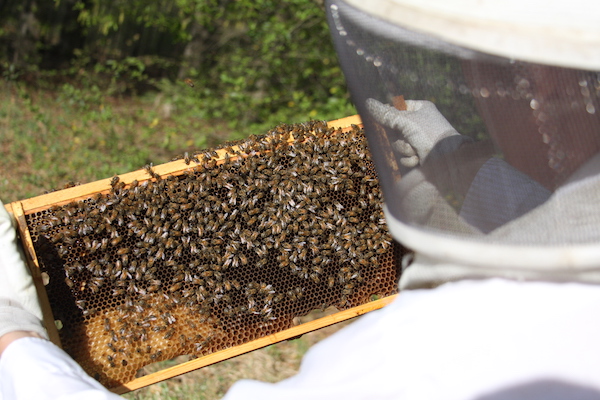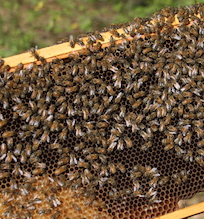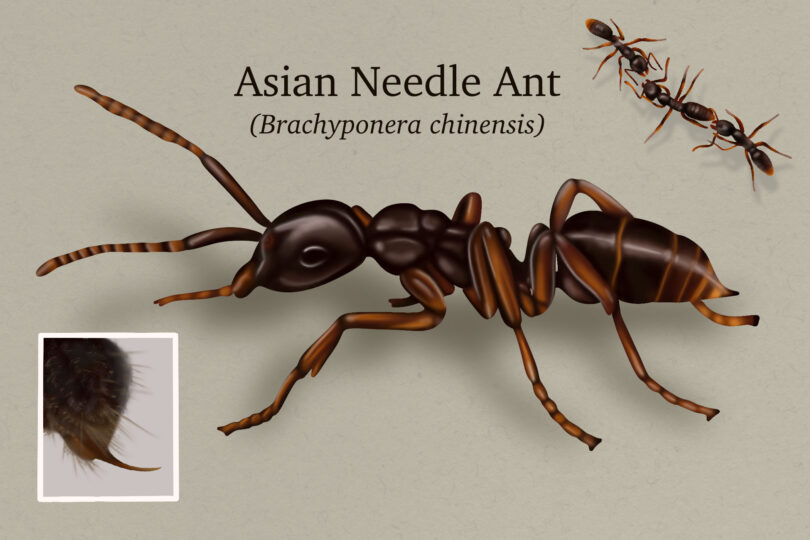Last month, I attended the Young Harris College-University of Georgia Beekeeping Institute.
While I am not a beekeeper, I am also not a novice to beekeeping. In my role as a UGA Cooperative Extension county agent, I have a number of friends in various bee clubs. I even have two hives that a friend keeps at my house.
In my two days at the institute, I learned that there was so much more to these amazing creatures than I ever realized. The week of June 17-23 is National Pollinator Week, and I thought this would be an ideal time to share some of my newfound bee knowledge.
Bees have three body segments: head, thorax and abdomen. The head has five eyes; there are two on the side and three small eyes that look like dots on the top of the head. These three eyes are more like light sensors so the bee knows which way is up. These light-sensing eyes can get bees into trouble in snowy areas. They sometimes exit the hive when snow is on the ground, and the reflected light from the ground is brighter than the sky, so bees fly upside down before crashing into the snow.
The thorax, the bee’s power center, is the location of the bee’s four wings and the six legs. There are many bee look-alikes in the insect world. One way to distinguish a bee from a fly is the bee’s four wings. Flies only have two wings.
The abdomen houses the internal organs, and the stinger is located at the base of the abdomen. The abdomen has seven segments and contains eight wax-producing glands. Wax is secreted in liquid form through segments four through seven until it cools and hardens. After it hardens, the hive workers collect it and form the hive’s cells. These wax scales are 3 mm across and 1 mm thick. It takes about 1,100 scales to make 1 gram of wax.
Bees, like butterflies and moths, go through a complete metamorphosis, which includes egg, larva, pupa and adult life stages. With honeybees, what interested me was the time it takes them to progress from egg to adult. A queen completes this in as little as 16 days, whereas a worker, the female sister, takes 21 days. A drone, the male brother of the queen, takes 24 days. The difference is based on survival. When a colony needs to replace a queen, they must replace her fast so egg-laying can continue.
It takes only three days for an egg to develop into a larva. A bee larva looks like a small grub or maggot. It is white in color, nestled into a cell and has no legs or eyes. During this stage it increases 900 times in weight. But how can it grow this fast, molting its skin six times, if it is blind and immobile? The worker bees feed these voracious little eaters, making approximately 1,300 visits each day to feed them and clean their cells.
After bees become adults, they have various roles in the hive. While we may think they leave the cells and start flying to flowers, only the oldest adults at the end of their lives can be seen in gardens. The bees begin their adulthood as homebodies, working on important jobs like cleaning and capping cells, basically acting as the hive’s sanitation department. After they graduate from these tasks, they move up to brood tending, comb building, grooming and food handling. It is not until about day 15-20 of their adult life that they begin outdoor tasks, like ventilating and guarding the entrance to the hive. An adult bee’s first foraging flight is usually not until about day 20. In the summer, most bees only live for 35 days. Foraging flights are dangerous business given all the hazards: lawnmowers, windshields, birds, spiders and other predators. It makes sense that this is a task for the older, disposable bees.
For more information on pollinators, visit extension.uga.edu/topic-areas/timely-topics/pollinators.








